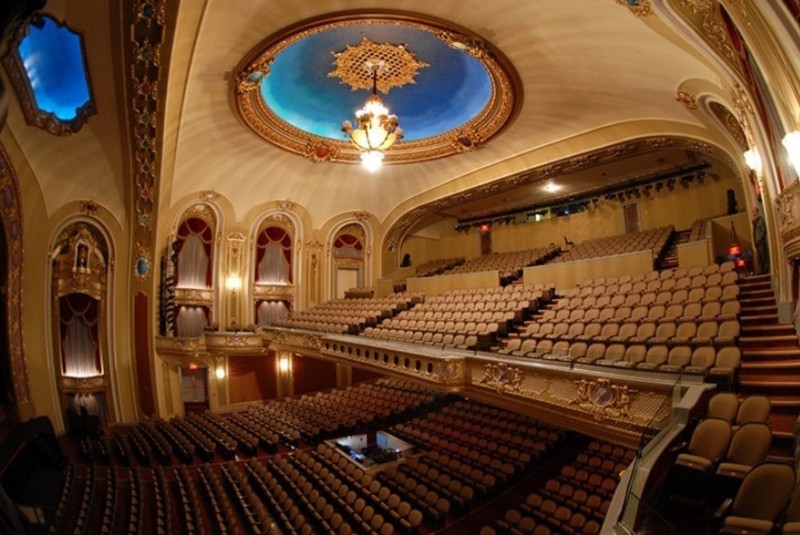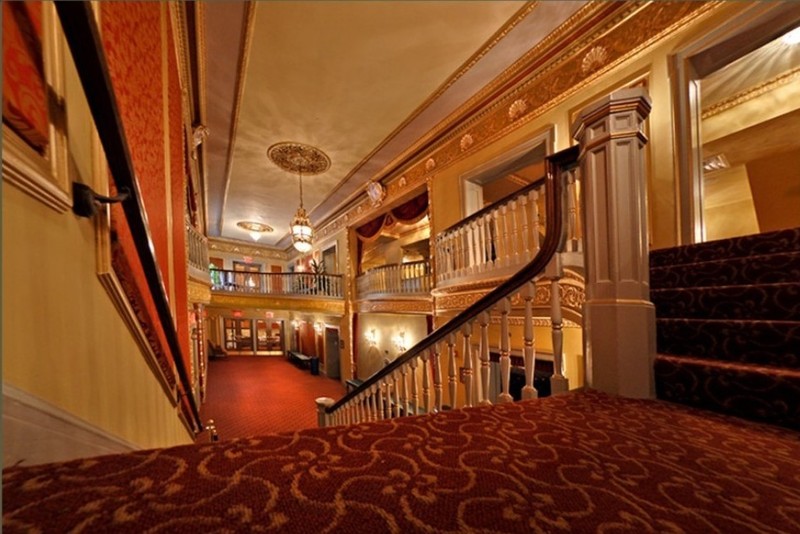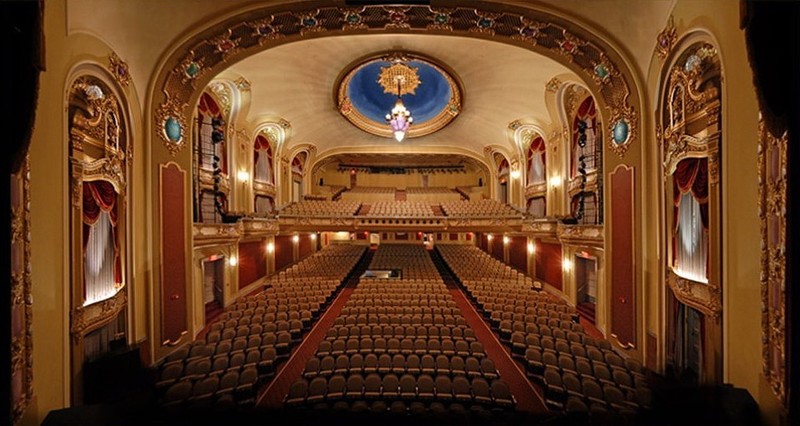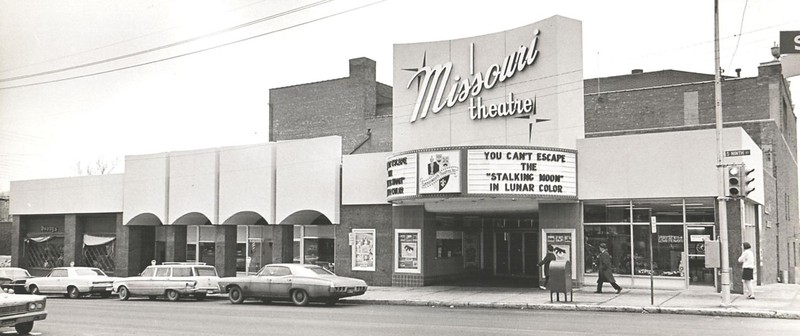The Missouri Theatre
Introduction
Text-to-speech Audio
Images
Missouri Theater, Columbia, Missouri

Missouri Theater, Columbia, Missouri

Missouri Theater, Columbia, Missouri

When the Missouri Theatre opened its doors in 1928, it billed itself as a "$400,000 show house of unrivaled beauty and extravagance." It was the first palace-style movie theater in mid-Missouri." ~ Missourian archives

Backstory and Context
Text-to-speech Audio
The 1928-built Missouri Theater in Columbia enjoys significance as the only remaining pre-Depression movie palace constructed in central Missouri. The Boller Brothers built the theater with a design that mirrors the Paris Opera House (Opéra Garnier).
The Missouri Theater emerged during the Roaring '20s economic boom, where money spent on leisurely pleasures such as jazz, theater, and the increasingly popular movie films. By the 1920s, camera technology allowed for much better on-screen presentations, actors and filmmakers frequently joined movie studios, and the introduction of audio appeared. Indeed, the Missouri Theater opened its doors one year after the release of The Jazz Singer, which proved to be the first time movie viewers heard the sound played through speakers surrounding the theater while the movie played on the screen.
Theaters built during the 1920s enjoyed lavish detailing and proved costly. The Missouri Company, Inc., spent $400,000 on the construction of the Missouri Theater, which would equate to more than $6 million in 2020. The extravagant interior of the building enjoys a design inspired by the Paris Opera House. Hence, the building includes ornate baroque and rococo style of the Louis XIV era. Its most recognizable feature is an 1800-pound Italian chandelier comprised of crystal prisms and etched panels. However, the Great Depression prevented the completion of the original plan of a five-story building with apartments above the theater.
The official opening occurred on October 5, 1928, to a capacity crowd that included 300 VIP guests. The theater displayed telegrams from famous Hollywood stars giving praise fo the new cinema. The guests enjoyed several forms of entertainment, including vaudeville acts and a group of high-kicking dancers known as the Missouri Rockets, who went on to become the famous Radio City Rockettes.
As is the case with many grand cinema palaces built during the 1920s, the Great Depression, World War II, and the emergence of multiplexes and bigger screens made the luxurious cinema challenging to operate. By the 1980s, the theater proved it could no longer serve as a profitable cinema house. The Missouri Symphony Society purchased the theater in 1988 for $370,000, far less than the cost of construction 60 years earlier when adjusted for inflation. Financial losses continued to mount for the owners as profits from ticket sales were not sufficient to support maintenance and renovation costs. In 2011, the Missouri Symphony Orchestra began using the theater, followed by the University of Missouri Theatre in 2014. Today the theater serves as the home to the University of Missouri School of Music.
Sources
Casetti, Francesco. Eye of the Century: Film, Experience, Modernity. New York, Columbia University Press, 2008.
"History of the Radio City Rockettes." rockettes.com. Accessed March 20, 2020. https://www.rockettes.com/history/
Moore, Miranda. "The Missouri Theatre: A gilded landmark on Ninth Street." Vox Magazine. voxmagazine.com. June 29, 2017. https://www.voxmagazine.com/magazine/the-missouri-theatre-a-gilded-landmark-on-ninth-street/article_df26afe7-d2af-5136-9ae3-535339f16350.html
Soren, Noelle "Nomination Form: Missouri Theater" National Register of Historic Places. mo.gov. January 1979. http://dnr.mo.gov/shpo/nps-nr/79001349.pdf
W., Audrey. "The Rise and Fall of Hollywood's Golden Age." Arcadia Publishing. arcadiapublishing.com. Accessed March 20, 2020. https://www.arcadiapublishing.com/Navigation/Community/Arcadia-and-THP-Blog/June-2019/How-the-Industrial-Revolution-Shaped-America
The Architects Alliance: https://www.thearchitectsalliance.com/project/missouri-theater/
The Architects Alliance: https://www.thearchitectsalliance.com/project/missouri-theater/
The Architects Alliance: https://www.thearchitectsalliance.com/project/missouri-theater/
Located at Vox Magazine: https://www.voxmagazine.com/magazine/the-missouri-theatre-a-gilded-landmark-on-ninth-street/article_df26afe7-d2af-5136-9ae3-535339f16350.html
